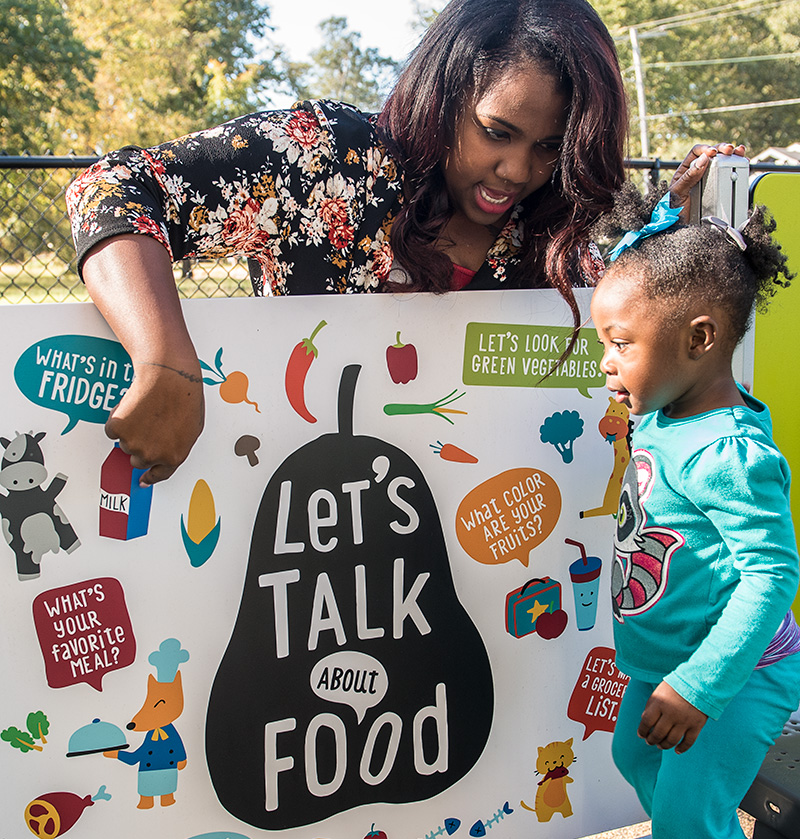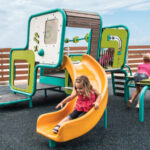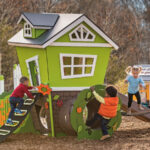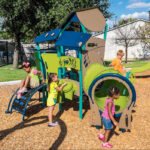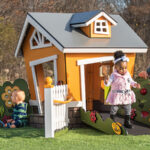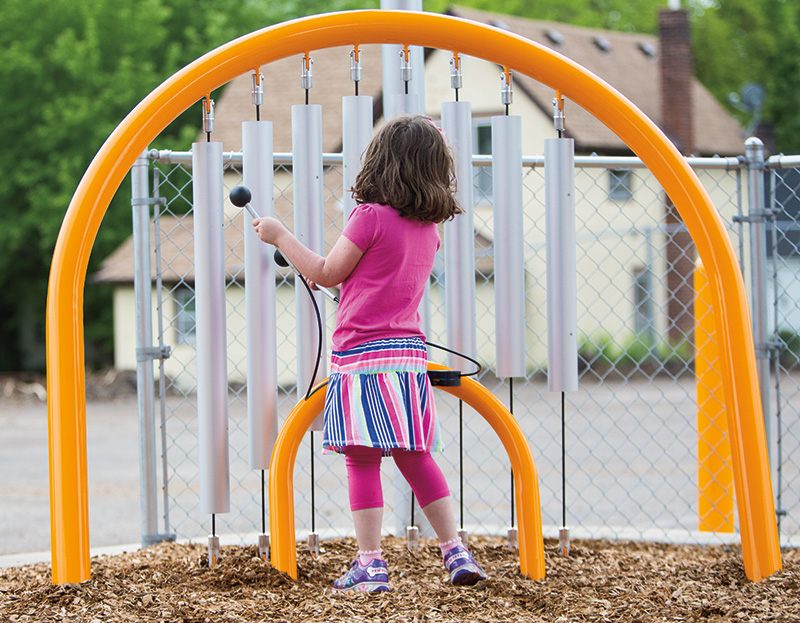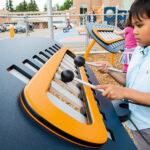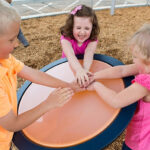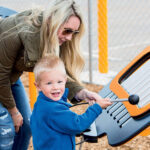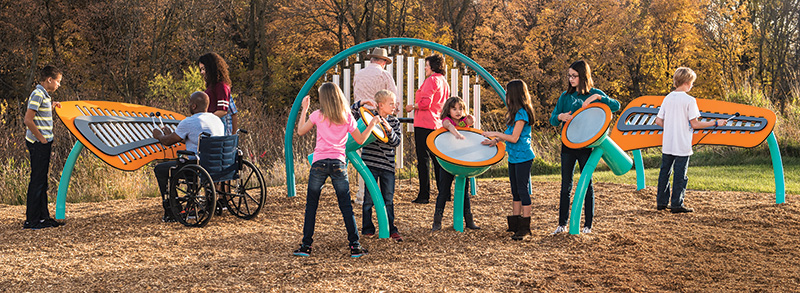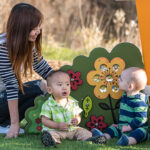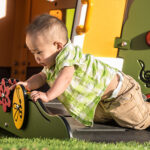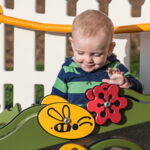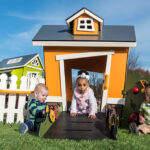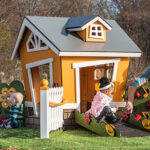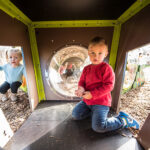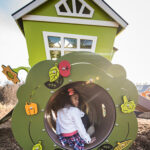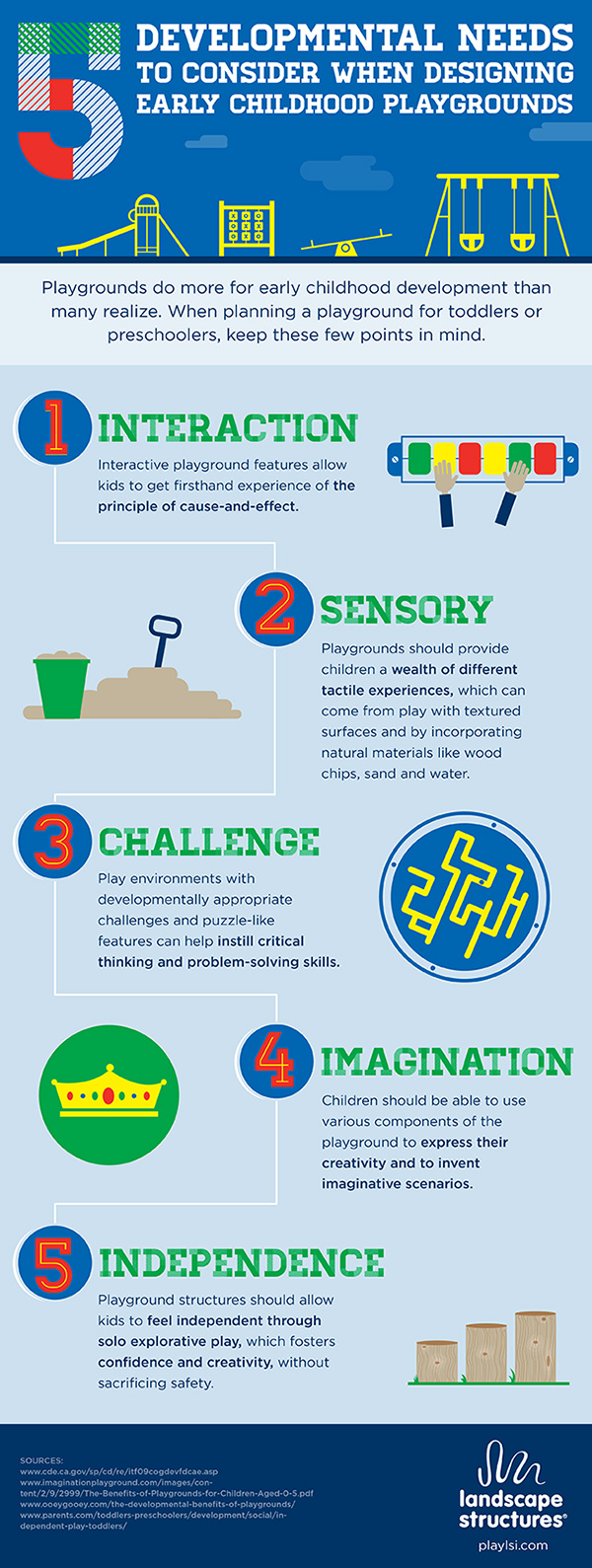In 2015, we collaborated with St. David’s Center in Minnetonka, Minn., to design an inclusive playground complete with an area dedicated to the new Rhapsody™ Outdoor Musical Instruments. Today, we’re happy to have Jackie Hanson, assistant teacher and children’s group piano instructor, as our guest blogger discussing how the music play equipment is helping students learn.
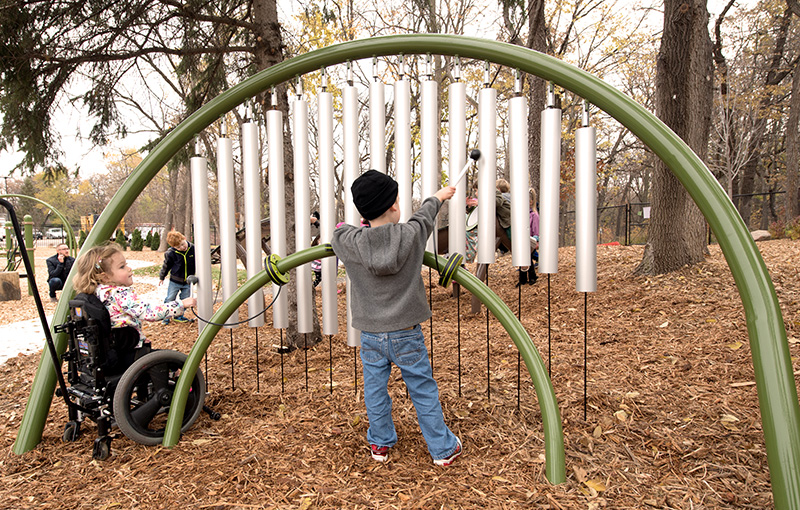
In the distance I hear a “Bang! Bang!” and a “Ding, Dong, Brrring” sounding out in mismatched pitches and uneven rhythms. I turn my head to see grins lighting up small faces and bodies in motion as children swing their arms back and forth, hitting the drums as hard as they can. One child tilts his head at the base of the hollow metal tubes of the Grandioso™ Chimes as another bounces the mallets off the bars, creating sounds of different pitch and timbre. What some might see as an annoyance or an incorrect attempt at playing music, I see as the purest form of artistic enjoyment and cognitive exploration.
St. David’s Center for Child & Family Development has been fortunate enough to install a brand new all-inclusive playground, which includes a new area filled with the Rhapsody Outdoor Musical Instruments ready and waiting for creative discovery. Music is an art form that humans were creating before the dawn of the written language. Therefore, it can be reasoned that it is one of the most natural ways in which a developing child can learn. The musical instruments at St. David’s Center including the Chimes, Vivo™ and Animato™ Metallophones, and three drums create the opportunity for children to foster fine and gross motor abilities, observe and explore scientific relationships, nurture creative imagination, and grow social interaction skills in a joyous, engaging and natural way.
When a child is playing a drum, fine and gross motor abilities are being developed. In the repeated motion of lifting each arm to hit the drum, gross motor strength is being built. Control is being developed in all the muscles of the arm as the child has to aim his/her hand toward the center of the drum, rather than letting it fall randomly on any area of the drum. Finally, the core is in constant use because it is being used to stabilize the body while the arms move quickly and the lower body stays still.
Scientific exploration is another wonderful educational opportunity these musical instruments can create. Once, a boy slammed the drum with all his force while another rested his cheek on the drum head feeling the vibrations. Another time, a little girl brought me over to tell me something to the effect of, “Look… this big one makes this really scary sound…” when pointing to the pipes of the wind chimes. Most recently, two friends were hitting the Grandioso Chimes as hard as they could and counting how long the sounds lasted. These are just a few examples of the observed scientific exploration, which are the building blocks of more complex discoveries in the future.
-

-

Music also fosters creative imagination and growth. While it’s easy to get stuck in the mindset of using an instrument for its “defined” use we forget that music is meant to be creative and a gateway for new ideas. While on the playground, I have seen children hitting the drums with sticks instead of their hands, riding the drums like horses, knocking on the Chimes pretending it’s a doorbell and using their fingers to try to play. Not all of these uses create music. But the children are using the Rhapsody Outdoor Musical Instruments to think outside of the box. They are not only fostering creative ideas for ways in which to play music, but also in how to use the musical instruments for completely different things.
These instruments have created countless moments of social interaction and growth. Music creates community; it is joyful and fun, and on more than one occasion I see two or three friends banging on the drums together with nothing but smiles and laughs on their faces. Playing the musical instruments together on the playground creates opportunities for social interaction skills. If two friends disagree on how to play, they learn how to resolve the conflict. Assuming the latter occurs, they then learn how to use each other to think of new creative ideas and work together. Having music on the playground creates one more outlet for these opportunities for social growth to occur.
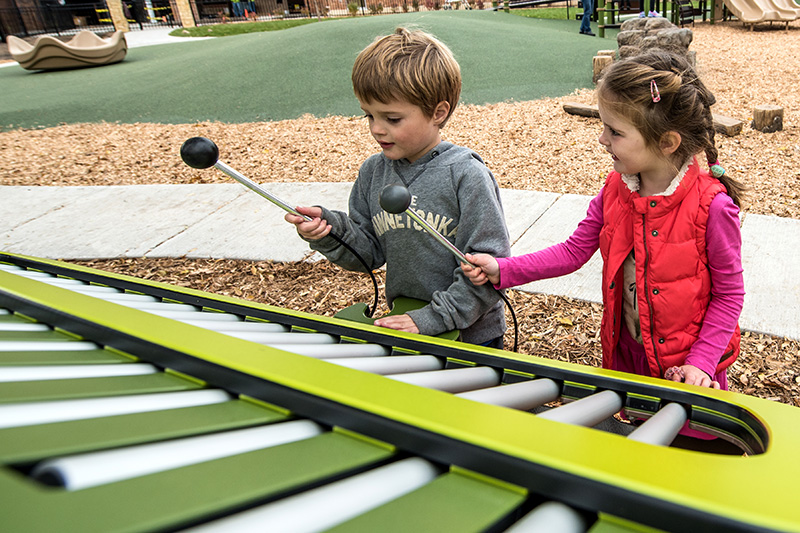
Music is a unique tool in that it is an artistic activity that can extend its educational impact to numerous other areas of development. Furthermore, it is one of the most natural ways to feel and express emotion as well as create a joyful sense of community. It has been wonderful to see children growing and further developing their skills using the instruments on St. David’s Center’s new inclusive playground, and I can’t wait to see the new discoveries and experiences that will continue to occur in the future years.
